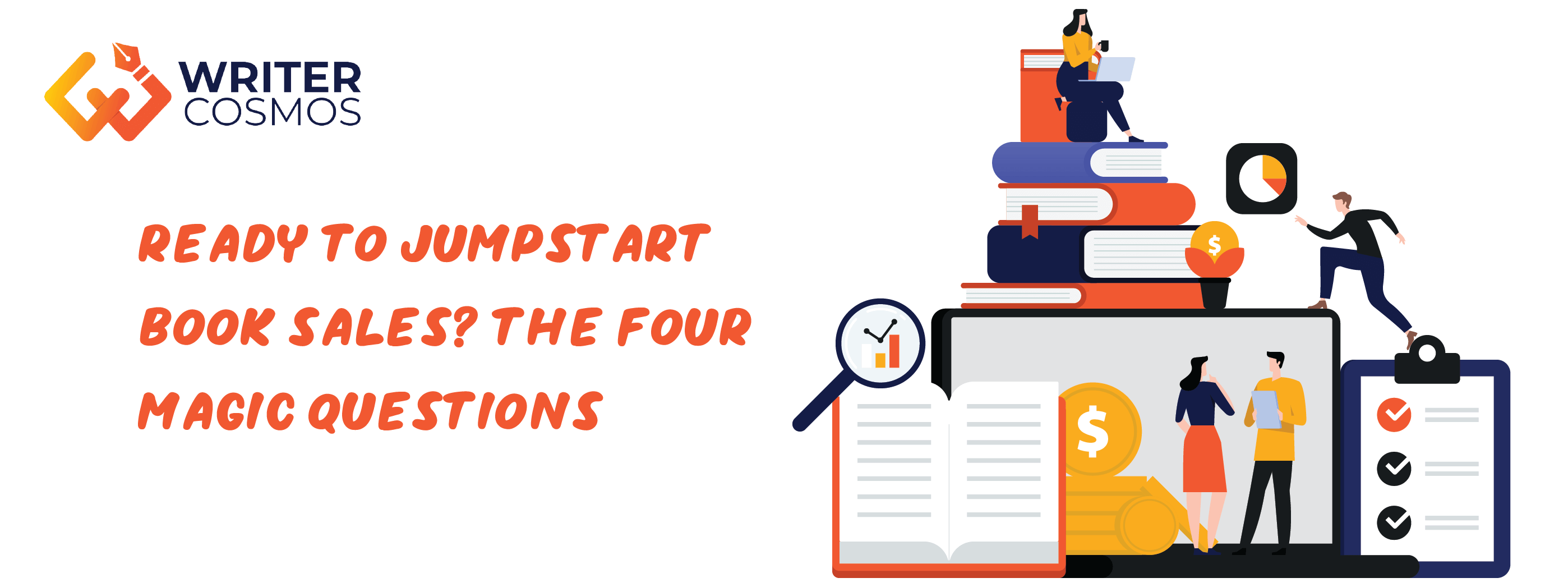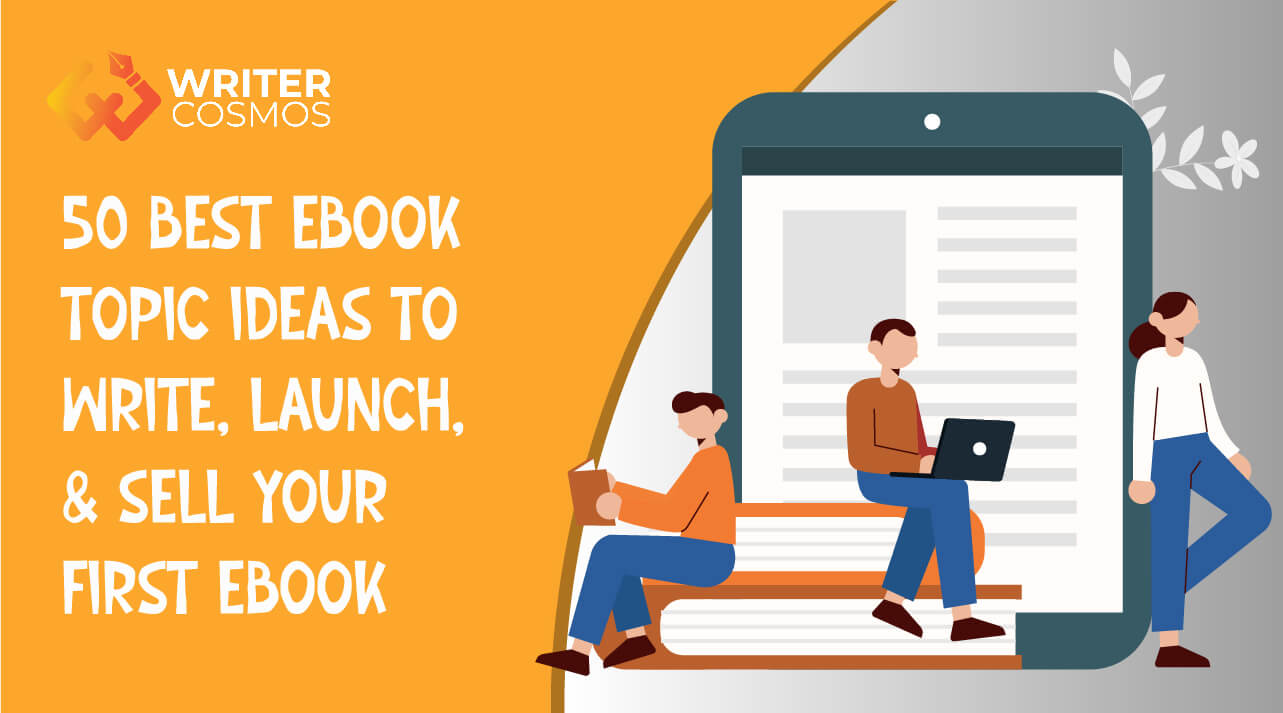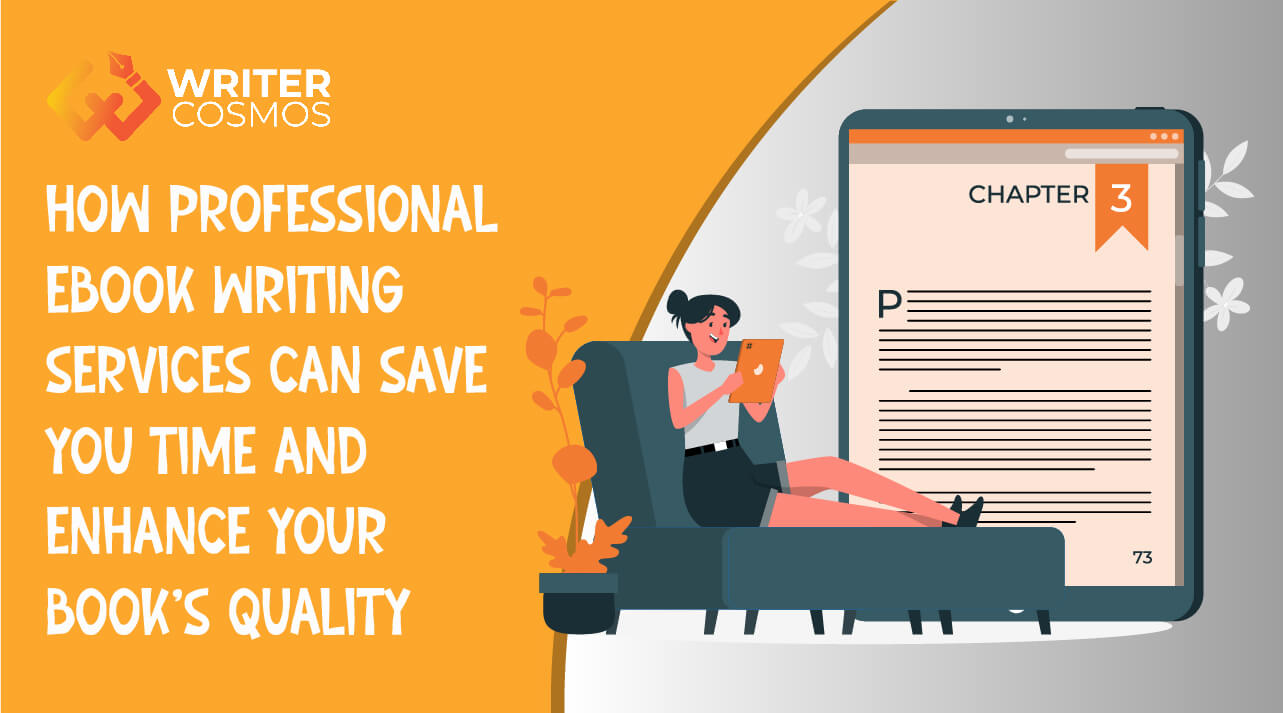How To Jumpstart Book Sales In 5 Steps—A Makeover Challenge

Have you written, or are you writing a book? This guide is for you. We assume you have written a book for others to read, not just for yourself. Well, you will know that the distribution and sale of the book and the consequent promotion to make that sale happen are as important as the book itself. We all know examples of books of low literary quality or content but have managed to sell thousands of copies thanks to promotion. Therefore, only some things are done once the writing phase ends.
Not much less. Now comes the battle. This is when you must go out of your cave and throw yourself into the world. We will explain how to sell a book and jumpstart sales to promote it successfully.
5 Stirring Steps To Sell A Book
To sell a book, there are three unavoidable steps that you have to take from the aspect of marketing and sales.
The first of these steps refers to the value of your book, which is essential to put a price on it; the second, your public, your readers, to whom it is directed; and the third, where are those readers who might be interested in your book. Let’s go step by step with each one.
1. The value of your book, what is it?
Your book will have a price that the potential reader must pay to get a hold of. Up to here, it is clear. How to set the price? What is the value of the book? As you can see, there are two different concepts: price and value. They are different but much related.
The first of the marketing strategies you must develop to sell your book is to convince potential buyers and readers that it is worth acquiring. And for them to assess whether they have to spend money to buy your book, you must offer them reasons that justify it. Every time we reach for our wallet, we want to know what we will get in return. In this case, a book, yes. But more is needed. Dig some more. Answer these questions:
- What will your readers find in your book? What will they get?
- Why should they choose yours among the thousands of books at their fingertips?
The answers may be that they will be able to solve a specific problem in their daily life, the characters’ experiences will move them, or they will learn unusual historical facts that no one has told them before. Defining what your readers will find in exchange for their money will make them opt for a more open attitude. And even if this expectation is high, they will be more willing to shell out a higher price for that volume.
2. Your readers, who are you addressing?
Once you have defined your book’s contributions, you must go to the next level: what kind of readers might be interested in it? Your book, even if you find it hard to assume, is only for some. Even if it is a general theme or a novel that you think is suitable for everyone, get used to the idea that it is only a product for some.
Launching yourself for indiscriminate sales is a complete mistake- wasting time, energy, and money. Focus on deciding what type of readers are your ideal audience, depending on the sector, subject, and style of your work. To do this, focus on your answer to the first question, what your book contributes, and now think about whom. What do you offer, and who is it for? Putting together the two answers will give you the key to who your work may be of interest to and who might be interested in buying it. To think about the actions you will develop to promote your book, always keep this reader in mind and imagine it.
Think about all the details: his age, gender, hobbies, what he does, what he likes, and how you imagine he will enjoy your book. Focusing on it will help you define those actions more clearly, and your ideas will skyrocket. In this way, you can devise the most appropriate messages to encourage purchases by those people.
3. Where to look for those readers?
Now that you have defined what your book offers and to whom, the third part of this equation is where those readers are and how you can find them. We insist that it is about something other than distributing your work left and right. You will exhaust your time and budget quickly, which will only do you a little good. You have to aim precisely at the spaces and places where you can find that ideal reader you have devised. To find out where those excellent readers for you are, inquire about the online and physical spaces they frequent.
Offline:
- If your readers are part of organizations or professional groups, they can
- Magazines and press they read
- Other consumption habits, such as the radio programs they listen to or watch on television
Online:
- The websites you usually visit
- The social networks in which they participate and if they are part of groups
- The forums of readers who consult and in which they participate
- Blogs and literary platforms in which they write reviews and consult those of other users
- Blogs and academic platforms in which works like yours are present
- Reading clubs in which they can treat work like yours
- When you have completed this exercise to identify where your potential readers are moving, you can take action and develop different strategies to attract them, such as:
- Collaborate in a literary magazine
- Offer several bookstores the possibility of presenting your book there
- Submit copies of your book to book review websites
- Get in touch with the reading groups and offer them an event with them and special discounts
- Take part in literary forums
- Hire book publishing services in specialized media, making a mix of online and offline media
As you can see, there can be thousands of ideas. In addition, this type of group action causes the pull and imitation effects: when we are among equals, we tend to do what other people like us do.
If one buys, other people will be encouraged to do so too. And there is another crucial issue that you should pay attention to in the recommendations. People trust and trust the advice of others like us from word of mouth. Use this also in your favor.
4. Sell a book with a publisher
Opt for distribution of the book and sale in establishments. A transcendental milestone in which you play a lot! Fortunately, the development of technology has made it possible for a writer not to be left alone in the hands of traditional publishers today, and the range of options for the distribution and sale of books has expanded.
Today you can develop this work entirely independently thanks to self-publishing. Publishing your work yourself is an option that you should not banish. Even if you are new to the subject, take away your fear and go for it. Listen to me. Selling a book is possible. The publishers you can work with are many. To choose the one that best suits you, you have to assess two aspects:
- The coverage they offer you, both in the physical environment and online, on different platforms.
- The portfolio of services they offer you: publishers cover the entire spectrum of needs that may arise.
5. Sell a book on Amazon
One option that has gained the most followers over the years is to sell a book through Amazon. Through Kindle Direct Publishing, its self-publishing platform, this giant offers the possibility for the authors of the works to publish and deal directly with them. A simple process with which, in just 72 hours, you can be selling. And that, in addition, has numerous advantages:
- It’s free.
- Digital publication is fast. In 72 hours, the book will be on sale.
- High level of royalty percentage for you in many countries.
- You will have extra resources to make yourself known as an author on the platform.
- You will have control over your sales and rights. You choose the sale price.
- You can publish in the digital and printed version.
- If you did not know the sale option on Amazon, surely now you will not let it escape.
Quick Ways To Promote A Book For Immediate Success

Well, your book is already published. What are you missing? The promotion. Here are our tips for promoting your book:
Take care of your digital assets
When you start with the promotion, users will look for you on the net. And, of course, they must find you. So take good care of your digital assets, from your website to your social media profiles.
Prepare engaging and well-written content that is liked and attracts the potential reader’s attention. And also use them as dissemination and information channels: from where you can buy your book to a complete file on the work, presentation schedule, and images of those events. In addition, you can provide the first few pages of your work for free and thus awaken the bug. And dare with other newer formats that can position you in the digital environment, such as:
- Video Book Trailers
- Video Interviews
- Podcast
Get social
You owe it to your work and your readers. So you must be social, interact with them in the physical environment, presentations, signatures, and fairs, and in the digital domain, respond to your social networks, share, and send messages.
Don’t stay only in the reviews
You have to look for readers to review your book and thus encourage others to buy it too. There’s no doubt. But think of other types of broader strategies that give you greater reach, such as media interviews, different forums, etc.
Marketing with content
The subject of your book will allow you to extract from it without revealing the plot and related content. More if it is fiction. From the historic environment to the place where the story takes place or some of the characteristics of the characters that appear in it. Hundreds of ideas in the form of new content can come from here. You can write articles about it and offer them to the local or general media.
Expand your radius of action
Do not stay only in the traditional places and spaces of promotion for your book. Rack your brain and think of more significant ideas about where to take your book. Start from the work’s location to the protagonist’s workplace.
Seek allies for promotion
As with spaces, other types of agents can also help you promote your book. They can be from private companies to associations or groups that share a hobby. Find out how it can be related to the plot or characters of your book. For example, if the protagonist is a cyclist, you can contact cycling teams, clubs, etc.
Design landing pages
Landing pages or landing pages can be a gateway to get direct sales from your website. A well-designed page with engaging content that offers, for example, the first pages of your book for free in exchange for users leaving you their email is an excellent strategy to create a good starting database. If you do it in the pre-launch phase of your book, you will arouse a lot of attention and curiosity about it through actions and content. And you can start talking about it before it hits the bookstores.
Send mails
That database that you have been creating has to serve you for something. You have to venture into it. It is not about being invasive, but you have a great tool to keep your audience informed and even develop exclusive actions with them: chapter previews, raffles, and discount vouchers. Think that they have given you their email, which is your ideal audience. They have already shown interest in you. It is a reef that you have to treat with care and affection.
Cheer up with online advertising
There are online resources, like social media marketing, that you can invest in even if your budget is modest. You already have a place to start. Keep in mind that the process of selling your book is just as necessary as the effort you put into writing it. The same usually happens with courses and services, it is not worth creating them, and you have to sell them.
Ready To Jumpstart Book Sales? The Four Magic Questions:

One of the most common situations we encounter when dealing with writers (even writers who have been at it for a while) is that they still need to answer these four fundamental questions. And they are essential to know which strategy is most suitable for you. Ask yourself:
- What do you want to get? What is your dream? Where do you see yourself in five and ten years?
- What is your target audience? Who do you write for? And where do those people you write for the move? Are they 20-30-year-old women who upload artistic photos to Instagram? Are they adolescent boys who move through YouTube? Or are they retired people who barely use the Internet?
- What is your platform? It is only used to have eighteen accounts on social networks if you have a home, a unique place where people can find you. I recommend, at a minimum, a web page.
- Who are you? This is the most complicated. Let’s say, better, what image you want to project. And this image does not have to be false; on the contrary, it has to be an improved and unified version of you. There has to be something immediately recognizable that makes others remember you.
What Is Launch Sales For Books?
This is the most widely used strategy in the traditional publishing world. The idea is to create maximum exposure for a product, trying to make it as attractive as possible so that the customer buys on impulse, repetition, or social influence. Here the most unexpected components participate. The goal is to make as much noise as possible to sell as many units as possible in the shortest possible time. Retail outlets that participate in physical distribution have limited space so that returns can occur in as little as two weeks. You see that everything has to be fast: we have a very narrow margin to make ourselves known.
Here comes the dilemma of who to publish with: with a large or small publisher or self-publish? Compare that minimum launch margin with the ten or fifteen-year contract for which a publisher can have your book in their possession and consider whether a launch sales strategy is ideal for your work. It will depend on your audience and the scope of visibility that that publisher can provide you. Luckily, more and more independent publishers combine various strategies to offer more life to their authors’ books (and whose contracts are shorter).
A traditional launch usually depends exclusively on the visibility the distribution gives to bookstores and large stores, obtained through contact with conventional media. Many publishers realize that more is needed today, and they are turning more and more to the visibility offered by so-called influencers (people with a large following and influence, especially on the Internet) and other valuable tools. However, many publishers still have to get their act together with the pending issue of online visibility if they want to continue dominating the market. For now, publishers take advantage of the weight of authors with a large platform.
How To Sell Books Online? Frequently Asked Questions:
Selling books online is becoming more and more common and for better sales normally authors hire book marketing services. Platforms for selling books online have multiplied over the years, and new readers are always willing to start the Kindle adventure. Writing and selling a book can be an excellent business for you. Whether you want to make your literature known worldwide or seek an audience shock for your business, selling books online is a highly realistic and productive alternative.
Ø How to sell a digital book?
To sell your book in eBook format, you must make a unique layout and upload your book file to a self-publishing platform. Amazon KDP is ideal for distributing and selling digital readers worldwide.
Ø How and where to sell a book?
Selling books in physical bookstores is fine, but it narrows the scope of your work to a precise geographic location. The most convenient is selling books online through Amazon KDP and other self-publishing platforms.
Ø How to sell books on Facebook?
To sell books on Facebook, you must create a page and one or more groups where you share valuable content with your target audience. Create images or short videos on your work’s theme, advise other writers, share your appearances in the press, etc.
Advantages Of Selling Books Online

Digital channels are excellent tools for selling used, new, and electronic books. Some of the advantages of using this medium to market this type of product are:
- There are no geographical limitations. You can send books anywhere in the world.
- You have access to a more significant number of potential customers.
- Your virtual bookstore is open 24 hours a day, seven days a year.
- It is possible to avoid salaries, security, and furniture expenses.
- You can make specific campaigns to attract certain users and make your advertising budget more efficient.
And many more! Since you can sell books through marketplaces like Amazon. However, having your online store to sell books can bring you many more benefits when we go into close detail. If you want to delve into this topic, look at this content on marketplaces and learn more about the pros and cons of selling in these digital spaces.
I Want To Sell Books Online
If you need assistance publishing an eBook, count on us. We at WriterCosmos put all our experience into self-publishing of books. Tell us your doubts; we would love to help you!
Tip: You must protect the rights of your work before putting it up for sale or even before submitting it for review by a publisher. This way, you will avoid terrifying situations such as total or partial plagiarism of your manuscript. Secure your authorship!
Categories
Table of Contents
Related Posts






